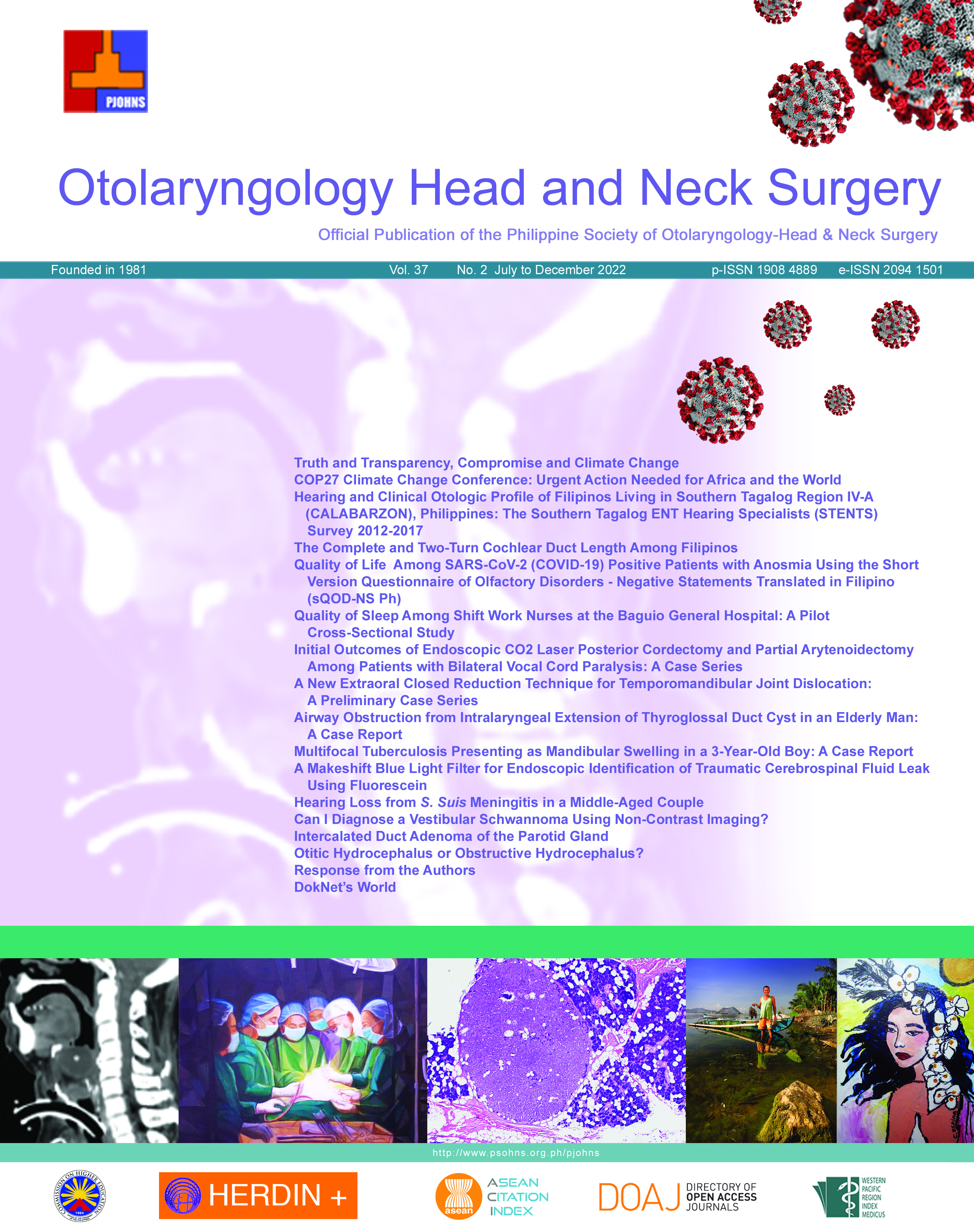A Makeshift Blue Light Filter for Endoscopic Identification of Traumatic Cerebrospinal Fluid Leak Using Fluorescein
DOI:
https://doi.org/10.32412/pjohns.v37i2.2025Keywords:
rhinorrhea, CSF leak, cerebrospinal fluid fistula, basilar skull fracture, posterior cranial fossa, post-traumatic cerebrospinal fluid leakage, blue light filter, endoscopic CSF leak repair, clivusAbstract
ABSTRACT
Objective: To describe a makeshift blue light filter for endoscopic visualization of a traumatic cerebrospinal fluid leak repair using intrathecal fluorescein and its application in one patient.
Methods:
Study Design:Surgical Instrumentation
Setting:Tertiary Government Training Hospital
Patient:One
Results: Intra-operative endoscopic identification of fistulae sites was achieved using intrathecal injection of fluorescein that fluoresced using our makeshift blue light filter in a 43-year-old man who presented with a 3-month history of rhinorrhea due to skull base fractures along with multiple facial and upper extremity fractures he sustained after a fall from a standing height of 6 feet. He underwent transnasal endoscopic repair of cerebrospinal fluid fistulae in the planum sphenoidale, clivus and sellar floor. Post-operatively, there was complete resolution of rhinorrhea with no complications noted.
Conclusion: Our makeshift blue light filter made from readily available materials may be useful for endoscopic identification of CSF leaks using fluorescein in a low- to middle-income country setting like ours.
Downloads
Published
How to Cite
Issue
Section
License

This work is licensed under a Creative Commons Attribution-NonCommercial-NoDerivatives 4.0 International License.
Copyright transfer (all authors; where the work is not protected by a copyright act e.g. US federal employment at the time of manuscript preparation, and there is no copyright of which ownership can be transferred, a separate statement is hereby submitted by each concerned author). In consideration of the action taken by the Philippine Journal of Otolaryngology Head and Neck Surgery in reviewing and editing this manuscript, I hereby assign, transfer and convey all rights, title and interest in the work, including copyright ownership, to the Philippine Society of Otolaryngology Head and Neck Surgery, Inc. (PSOHNS) in the event that this work is published by the PSOHNS. In making this assignment of ownership, I understand that all accepted manuscripts become the permanent property of the PSOHNS and may not be published elsewhere without written permission from the PSOHNS unless shared under the terms of a Creative Commons Attribution-NonCommercial-NoDerivatives 4.0 International (CC BY-NC-ND 4.0) license.



